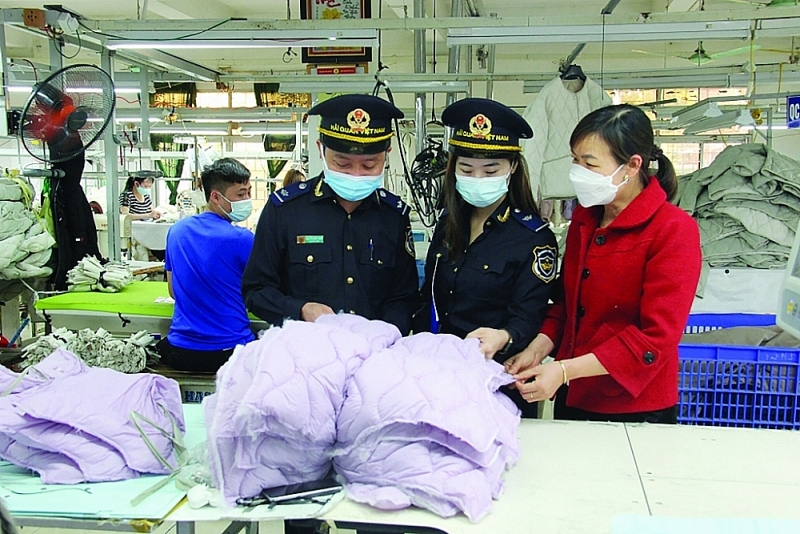In 2022, Vietnam’s exports emerged as a bright spot in terms of turnover, trade surplus, export structure and market recovery. As a result, exports increased by about 10.5%, reaching about US$371.5 billion, exceeding the target set by the National Assembly and the Government (the plan was to increase by 8%). There were 39 items with export turnover of over US$1 billion (increasing by four items compared to 2021), of which nine achieved export turnover of over US$10 billion (one more than in 2021).
All export markets have recovered compared to 2021. In particular, markets that are partners with a Free Trade Agreement (FTA) with Vietnam have experienced high growth, such as the European Union (EU) increased by 23.5%; Southeast Asia increased by 23.3%.
In particular, in 2022, for the first time, Vietnam’s seafood exports reached US$11 billion, which is ahead of schedule compared to the Government’s target of US$10 billion by 2025.
 |
| Ninh Binh Customs Branch sent customs officers to the head office of the enterprise to grasp and handle arising problems. Photo: H.Nụ |
According to the assessment of the growth results of exports, 2022 is a bright spot in the country’s economic development, demonstrating efforts in synchronously implementing many solutions to remove difficulties and support businesses. Moreover, export enterprises are proactive and flexible in production so that they can seize the opportunity of recovery and scarcity of goods from import markets, effectively exploiting FTAs to quickly boost exports.
2022 is also the year the Customs sector officially completed its target of revenue collection with the figure of VND 437,383.3 billion thanks to the import-export activities peaking at US$750 billion and an increase in revenue of nearly VND 460 billion from handling violations.
One of the main factors helping the Customs sector to complete the task of revenue collection early is the strong growth of import-export activities; in which, many taxable items recorded an increased value of turnover, helping to exceed budget revenue such as crude oil, plastics, chemicals, petrol, iron and steel, CBU cars, etc. In particular, some local customs units have made great efforts.
Not only that, to achieve the above results, the units have focused on promoting administrative procedure reform; removing and promptly solving difficulties and obstacles for enterprises, improving the business environment, facilitating enterprises to develop stably and firmly, attracting investment, increasing new production capacity, promoting economic growth, creating a premise to increase revenue for the state budget.
In addition, the units regularly assess the state revenue, review revenue sources, analyze and evaluate the increase and decrease in revenue each month, and forecast the trend and rate of revenue in the last months of the management area.
In particular, the above exciting growth is the result of the efforts of the business community to overcome difficulties to stabilize production, maintain the market, and secure the international supply chain. In particular, the Customs sector has actively supported import-export enterprises, ensuring raw material sources, supply chains, and speeding up clearance procedures.
According to a representative of the Import-Export Tax Department, there are 27 customs departments in provinces and cities with revenues exceeding the assigned target. HCM City Customs Department reached VND 143,040.7 billion, exceeding the estimate by 22.8%; Hanoi Customs Department reached VND 34,709.3 billion, exceeding the estimate by 26.6%; Quang Ninh Customs Department reached VND 16,362.6 billion, 63.6% higher than the estimate.
In addition, there are eight customs departments of provinces and cities that did not complete the estimate due to many objective reasons related to the product regulation policy; and many projects behind schedule.
